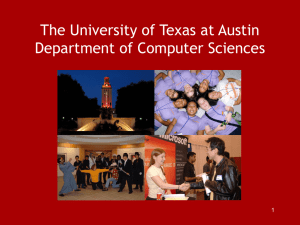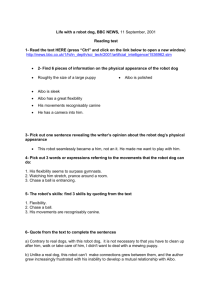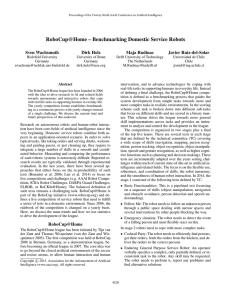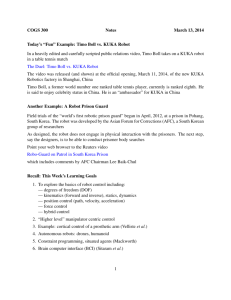Balance control for the Newcastle Bull dog terrier
advertisement
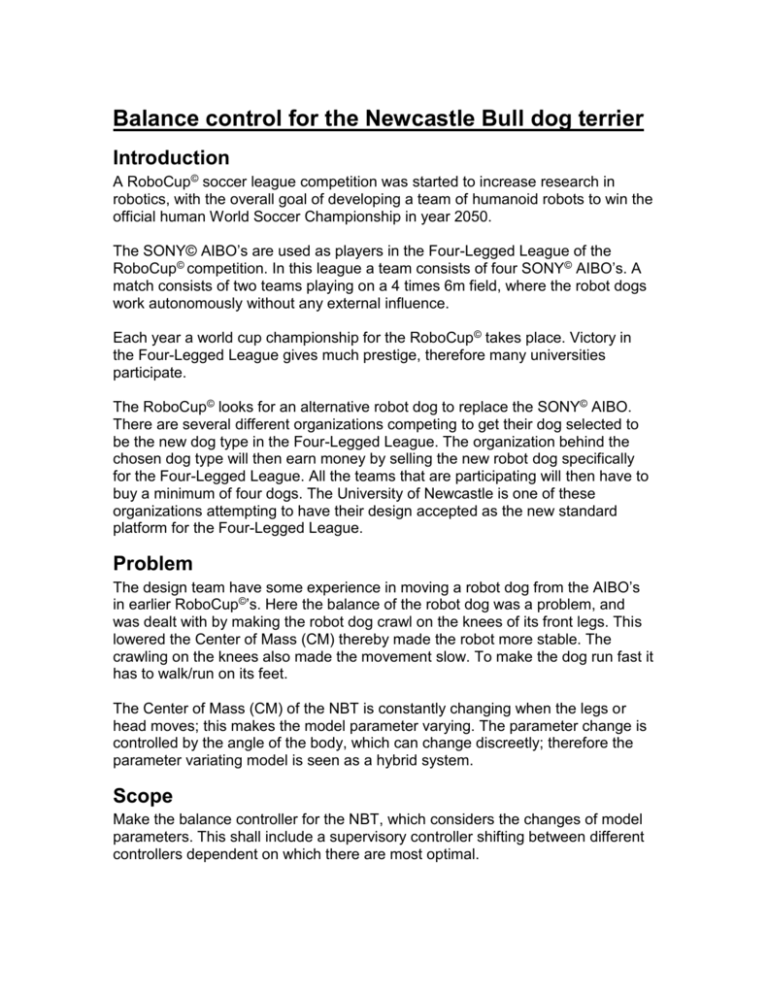
Balance control for the Newcastle Bull dog terrier Introduction A RoboCup© soccer league competition was started to increase research in robotics, with the overall goal of developing a team of humanoid robots to win the official human World Soccer Championship in year 2050. The SONY© AIBO’s are used as players in the Four-Legged League of the RoboCup© competition. In this league a team consists of four SONY© AIBO’s. A match consists of two teams playing on a 4 times 6m field, where the robot dogs work autonomously without any external influence. Each year a world cup championship for the RoboCup© takes place. Victory in the Four-Legged League gives much prestige, therefore many universities participate. The RoboCup© looks for an alternative robot dog to replace the SONY© AIBO. There are several different organizations competing to get their dog selected to be the new dog type in the Four-Legged League. The organization behind the chosen dog type will then earn money by selling the new robot dog specifically for the Four-Legged League. All the teams that are participating will then have to buy a minimum of four dogs. The University of Newcastle is one of these organizations attempting to have their design accepted as the new standard platform for the Four-Legged League. Problem The design team have some experience in moving a robot dog from the AIBO’s in earlier RoboCup©’s. Here the balance of the robot dog was a problem, and was dealt with by making the robot dog crawl on the knees of its front legs. This lowered the Center of Mass (CM) thereby made the robot more stable. The crawling on the knees also made the movement slow. To make the dog run fast it has to walk/run on its feet. The Center of Mass (CM) of the NBT is constantly changing when the legs or head moves; this makes the model parameter varying. The parameter change is controlled by the angle of the body, which can change discreetly; therefore the parameter variating model is seen as a hybrid system. Scope Make the balance controller for the NBT, which considers the changes of model parameters. This shall include a supervisory controller shifting between different controllers dependent on which there are most optimal. Resources The project builds on top of the project made by Mikael Berg Andersen doing his visit to the University of Newcastle, Australia in second part of 2006. Supervisors Jakob Stoustrup jakob@es.aau.dk Jan Helbo Jan@es.aau.dk

